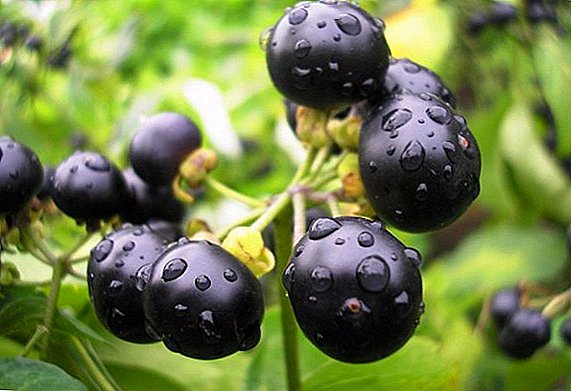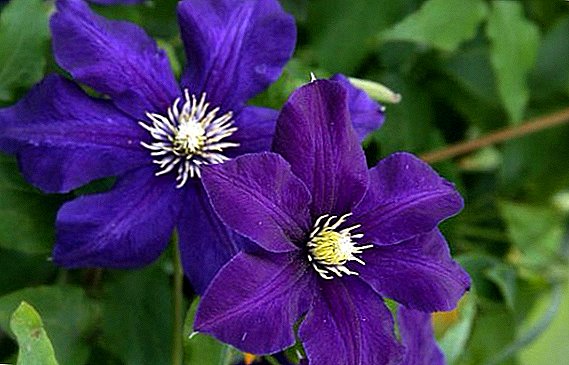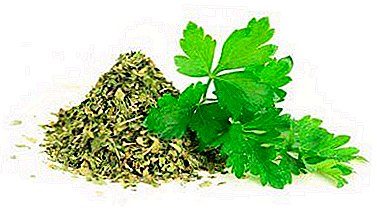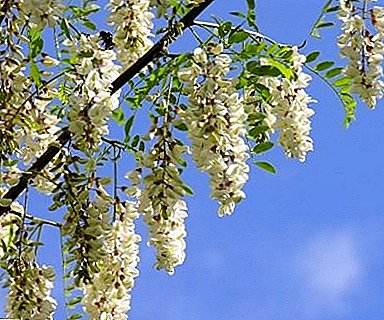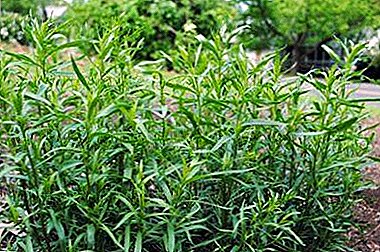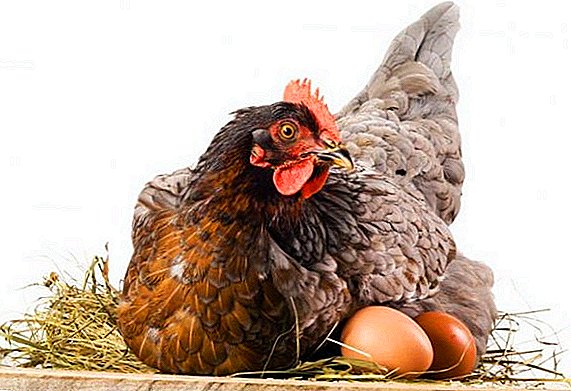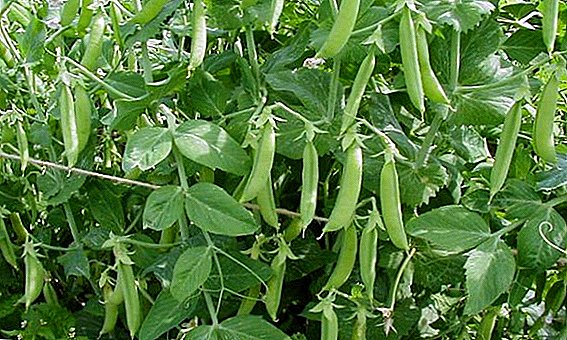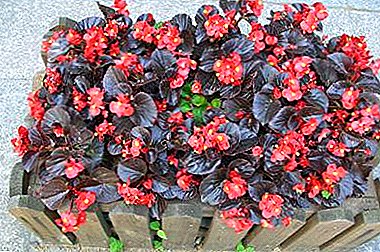
Begonia is a very popular plant for both experienced gardeners and flower lovers.
Perhaps one of the reasons for such popularity is the variety of varieties that begonia is represented.
About one of them - begonias of ever flowering - and the features of her care are described in detail in this article.
Also in the article we will consider in detail the characteristics of the flower, the rules of care, and also we will study the methods of reproduction.
Flower description
Begonia ever flowering terry - one of the many species of the Begonia family. This species, in turn, has many varieties that differ in height, leaf color, size and number of inflorescences. and other parameters. Begonia is a herbaceous plant, it grows well in both indoor and outdoor conditions.
From the name it follows that the plant blooms for a long time. This is true, regardless of whether it is planted in a flowerbed or in a flowerpot, which is an undoubted advantage over other species. Of course, long flowering is possible only if the begonias are provided with proper care.
Plant photo
Here you can see photos of the always-blooming terry begonia:





- Lush and spectacular begonia Elatior - all the secrets about the plant.
- How to provide decent care for begonia Elatior at home?
- Practical recommendations for the breeding of begonia Elatioor seeds and cuttings.
Instructions for planting on a bed
- Begonia seedlings placed in pre-prepared holes and shallowly drown, about 2 centimeters.
- When planting, leave at least 10 centimeters between seedlings. If you plant begonia closely, growing bushes will come at each other.
- Sprinkle the wells with earth.
- The first feeding should be carried out with nitrogen fertilizer seven days after planting, only two times with a difference of 10 days. Pour fertilizer during watering.
How to choose a place?
Begonia is recommended to plant on the front line of the flower bed. The flowerbed will look especially bright if the flowers are planted with large halos. Drawing patterns with alternating different varieties of this plant is another way to make a flower garden elegant and original.
Important: despite the thermophilic, the plant does not tolerate direct sunlight! The best solution is to place the seedlings in the penumbra: there they will get enough heat and will be protected from burns.
- The soil. Good soil is very important when planting begonias: the plant does not take root in the ground, in which there are no nutrients left. The tendency of the soil to retain water will also prevent flowering.
- Priming. should be necessarily fertile, slightly acid and loose. When preparing the soil it is advised to use peat, humus or sand.
Home and Outdoor Care
 Humidity. Humidity, comfortable for begonias, is 50% or higher.
Humidity. Humidity, comfortable for begonias, is 50% or higher.In the case of growing begonias in the apartment often have to deal with the problem of low humidity. To prevent this from negatively affecting the flower, you can place a container with water on the window sill next to the pot.
Another method: put the begonia in the pan with a small amount of water - evaporation will save the flower from premature death.
- Watering. The best time for watering begonias - morning and evening hours. Water for irrigation should be warm and soft, it is desirable to defend it the day before during the day.
It is believed that the need to water begonia, if dry 1-2 centimeters of soil. In summer, the plant needs abundant, but not excessive watering, otherwise it will die. In the winter season is fairly moderate watering.
Attention: Begonia can not be sprayed! This will cause spots on the leaves of the plant. - Fertilizer. Every two weeks the seedlings must be fertilized with a complex fertilizer for flowering plants, then the begonia will bloom for a long time and please the eye of its gardener.
- Repotting Begonia is not customary to replant often, as many flower growers are used to doing. Transplanting is recommended only in cases when the plant becomes cramped in a pot. Therefore, it is preferable even when planting to place the flower in a large container, which he cannot overturn.
All the details about the care of ever flowering begonia you will find in this article.
Diseases and pests
When growing begonias, growers most often encounter the following problems:
- pincers;
- fungal infections;
- powdery mildew.
Before planting begonias in the soil, you need to check the seeds for ticksthat are carriers of various infections. Chemical agents, such as Anti-mite or Fufanon, are most often used to combat ticks. As an alternative means you can use soap solutions of chamomile or tobacco, which is applied to the lower part of the plant. Spraying should be continued until the complete disappearance of the parasites.
Begonias are also susceptible to fungal diseases. In such cases, the soil should be treated using special tools sold in hardware stores. However, the greatest danger to begonias is powdery mildew, appearing on the plant in the form of plaque. This disease can be caused by too high humidity. The use of fungicides helps to say goodbye to powdery mildew.
Features of growing
- Before embarking on the planting, begonia is brought out into the street, gradually increasing the hardening time. So the plant is easier to get used to outdoor conditions.
- To plant seedlings in open ground is not earlier than June, when the period of spring frosts will pass. This summer the first inflorescences will appear.
- Flowerbed with begonias should be regularly loosened and cleaned from weeds. They can provoke an infection and simply spoil the look of the flowerbed.
Important: it is necessary to loosen carefully so as not to damage the root system of the flower.
Breeding
 Begonia can be propagated in two ways.:
Begonia can be propagated in two ways.:
- seeds.
- cuttings.
The first method is quite time consuming, so it is not recommended for beginners.
- It is customary to plant seeds in the first months of winter in a container with fertile soil.
- If the seeds are small, you can mix them with sand: then they will evenly settle in the ground.
- After planting, the seeds must be covered with glass or paper, which lets in sunlight. The temperature in the tank should be about 21-22 degrees.
- The emerging condensate is removed, watering is carried out by spraying the soil.
- After a couple of weeks, when shoots make their way, the glass is removed.
- When 3 leaves appear on the stem, begonia can be planted in pots.
Reproduction using cuttings requires less effort, produced in the spring.
- The stalk of the begonia is cut at an angle, leaving about 3 leaflets on it.
Important: Before planting, the stalk should be sanitized by treating the cut with coal.
- After that, the cutting under the slope is placed in the ground and covered with polyethylene or a cloth with holes in it.
- Approximately in a month, when the cuttings take root, the fabric is removed, and the begonia is seated in separate pots.
Possible problems
Begonia is afraid of cold weather, therefore for the winter it is transplanted from a flower bed to a room pot. Caring for a flower at home is no different from caring for a plant. in open ground. Moderate watering, good lighting and feeding will help the begonias to winter successfully.
In most cases, it continues to bloom while in the apartment. If the petals are fallen, there is no reason to worry: after some time, the stem will be again covered with double buds.
As you can see, begonia is a very unpretentious plant, and caring for it is not so complicated that it will greatly please newcomers. All that is needed to grow a beautiful flower is to create comfortable conditions for it in accordance with the above tips, and then she will certainly thank her owner for a long and lush flowering!


 Humidity. Humidity, comfortable for begonias, is 50% or higher.
Humidity. Humidity, comfortable for begonias, is 50% or higher.